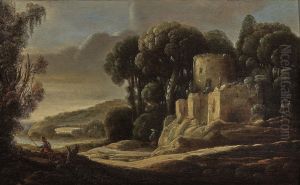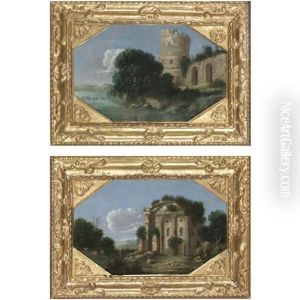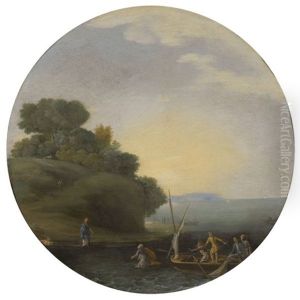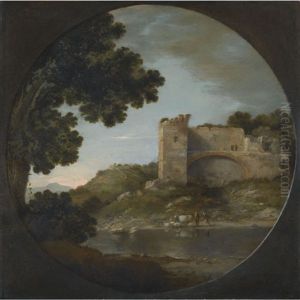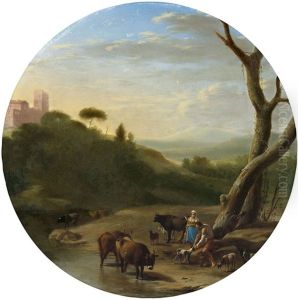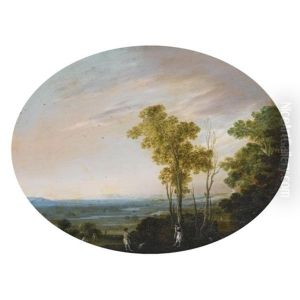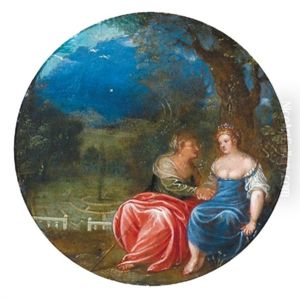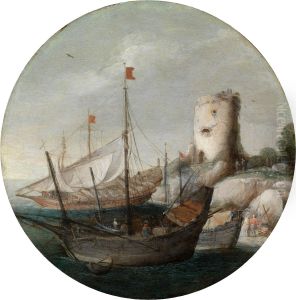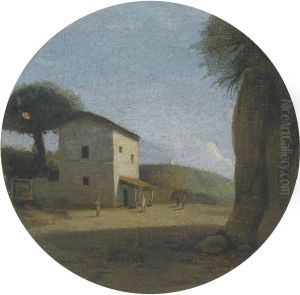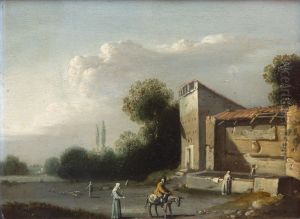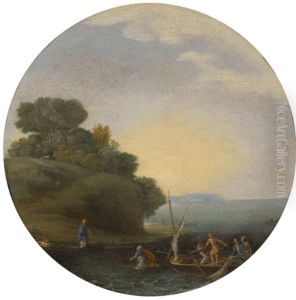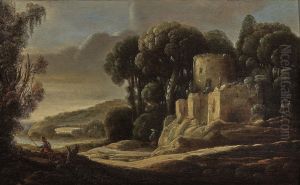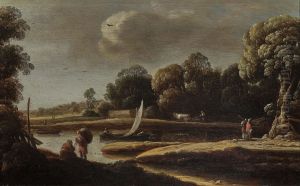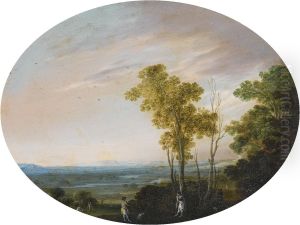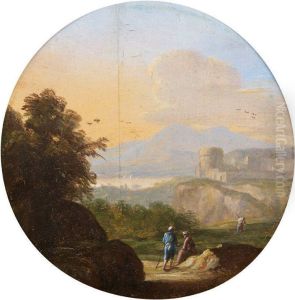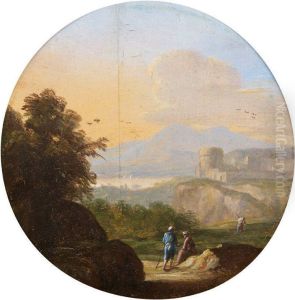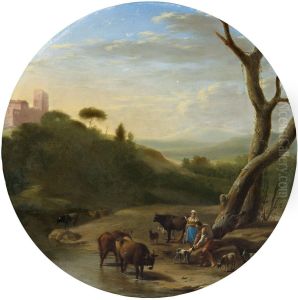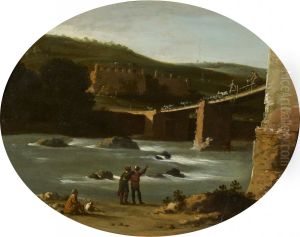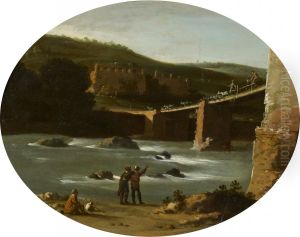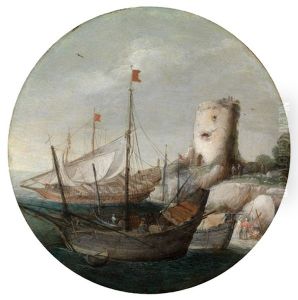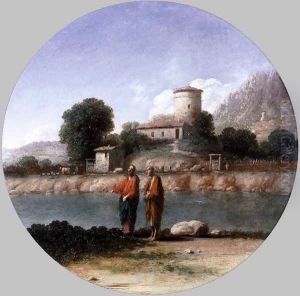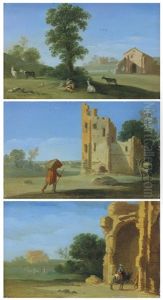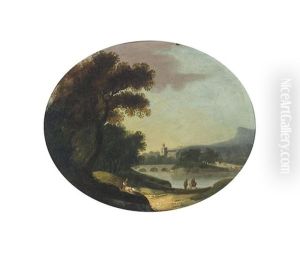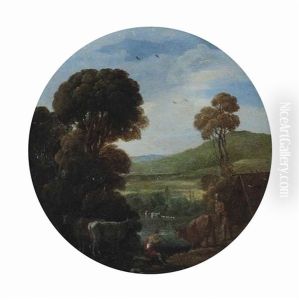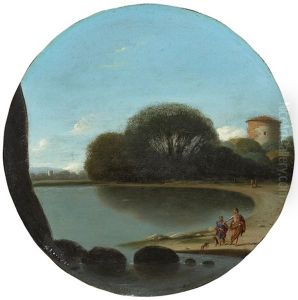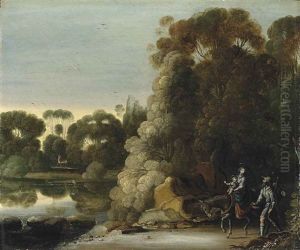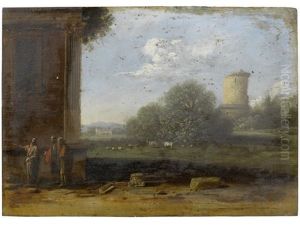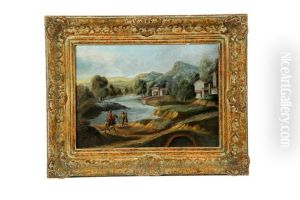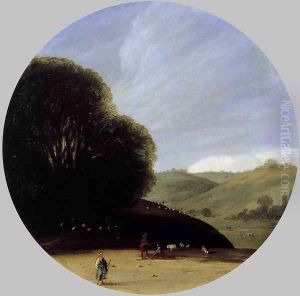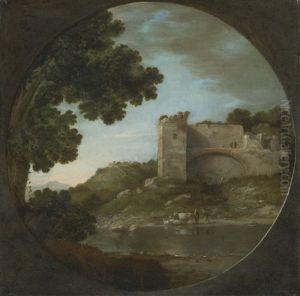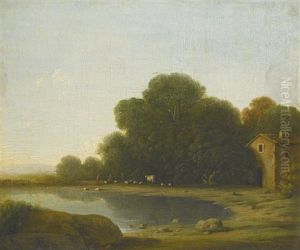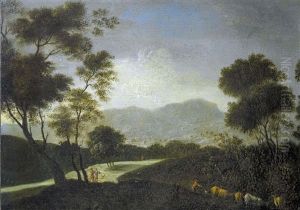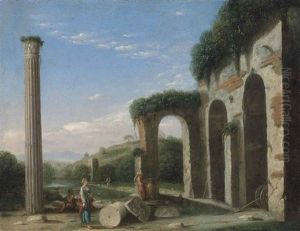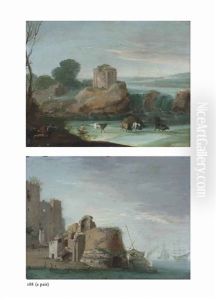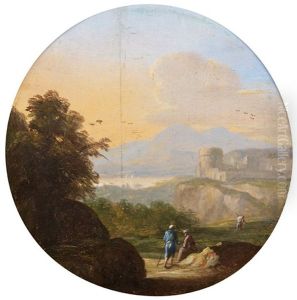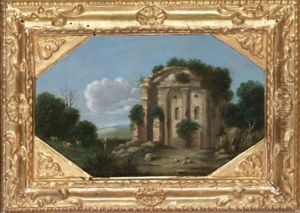Goffredo Wals Paintings
Goffredo Wals, also known as Gottfried Wals or Goffredo Tedesco, was a landscape painter of German origin who was active in Italy during the early 17th century. His birth year is not precisely known, but he is believed to have been born around 1595. There is also uncertainty surrounding the year of his death, which is commonly thought to be around 1638, although some sources suggest it could have been later.
Wals initially received his artistic training in Cologne, Germany, and he later moved to Italy, which was a common practice for Northern European artists seeking to refine their skills and draw inspiration from the Italian masters. He was primarily active in Rome, where he became associated with the circle of artists around the German painter Adam Elsheimer. Elsheimer's influence is evident in Wals' work, particularly in his attention to detail, his treatment of light, and his intimate, often nocturnal landscapes.
Although Wals left behind a relatively small body of work, he had a significant influence on landscape painting, especially in Italy. His landscapes typically feature rugged terrain and are characterized by a poetic, sometimes dreamlike quality. Wals was innovative in his depiction of light and shadow, helping to advance the development of chiaroscuro in landscape painting. His works were not large, grand vistas but intimate scenes that often included dramatic lighting effects and a high level of detail.
Unfortunately, Wals did not achieve great fame during his lifetime, and many of his paintings were later attributed to other artists. However, his contributions to the genre of landscape painting have been more fully recognized in modern times. His influence can be seen in the works of subsequent artists, such as Claude Lorrain and Nicolas Poussin, who were pivotal in the development of classical landscape painting.
Due to the scarcity of documented information about Wals' life and the limited number of surviving works confidently attributed to him, much of his biography remains shrouded in mystery. Nonetheless, he is remembered as an artist who brought Northern European sensibilities to the Italian landscape tradition, thereby enriching it and helping to lay the groundwork for its future evolution.
